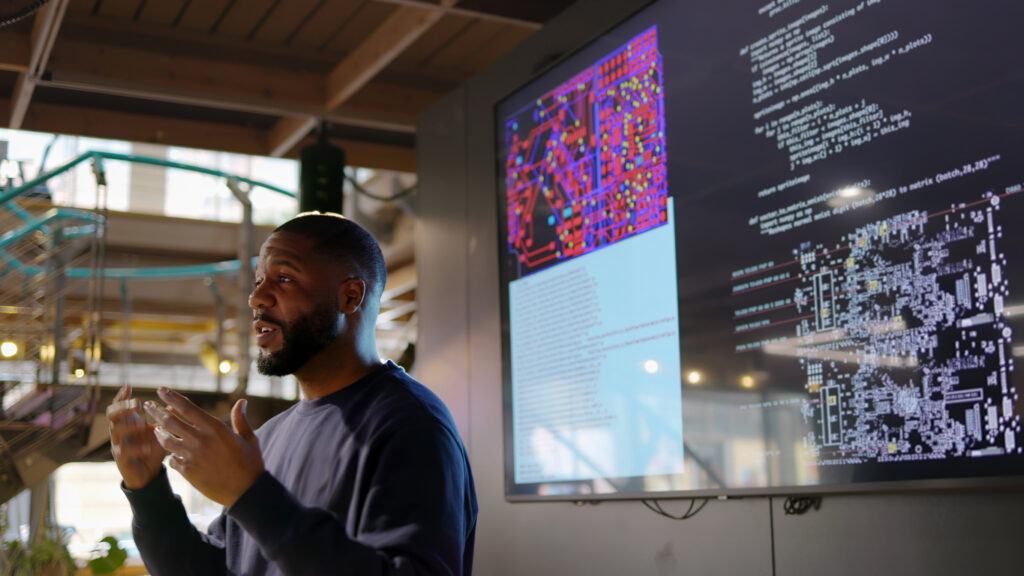Table of Contents

Cloud computing has revolutionized the way businesses store and process data. With its scalability, cost-effectiveness, and flexibility, cloud computing has become the go-to solution for organizations across industries. However, as the adoption of cloud computing continues to rise, so does the need for robust security measures to protect sensitive data from evolving threats.
In this article, we will explore the future of cloud computing security and examine emerging trends and innovations shaping the industry.
The Future of Cloud Computing Security
As cloud technology continues to evolve, so does the importance of following cloud security trends. With the increasing amount of data stored in the cloud, it has become crucial for organizations to implement robust security measures to safeguard their assets.
Current State of Cloud Computing Security
Cloud computing security is currently a top priority for organizations due to the increasing reliance on cloud services for data storage, processing, and application hosting. The existing security measures in cloud computing primarily focus on:
- Data Protection: Encryption of data at rest and in transit, ensuring that sensitive information is safeguarded against unauthorized access.
- Access Control: Implementation of robust identity and access management (IAM) protocols, including multi-factor authentication (MFA) and role-based access control (RBAC), to ensure only authorized users can access cloud resources.
- Threat Detection and Prevention: Deployment of advanced threat detection systems, such as intrusion detection and prevention systems (IDPS), to monitor and respond to potential security incidents.
- Compliance and Regulatory Adherence: Ensuring that cloud services comply with industry-specific regulations and standards such as GDPR, HIPAA, and PCI DSS.
- Security Monitoring and Incident Response: Continuous monitoring of cloud environments for suspicious activities and having a well-defined incident response plan to mitigate the impact of security breaches.
Despite these measures, cloud computing faces several security challenges:
- Complexity of Cloud Environments: Managing security across diverse and complex cloud environments can be challenging, particularly in hybrid and multi-cloud setups.
- Shared Responsibility Model: Understanding and effectively implementing the shared responsibility model, where both the cloud provider and the customer have distinct security obligations.
- Data Breaches and Leaks: Risks of data breaches due to misconfigurations, human errors, or sophisticated cyber-attacks.
- Insider Threats: Mitigating risks posed by malicious insiders who have access to sensitive cloud resources.
- Compliance Management: Navigating the complex landscape of global regulatory requirements and ensuring continuous compliance.
Importance of Security for Continued Growth and Adoption of Cloud Computing
Security is paramount for the continued growth and adoption of cloud computing for several reasons:
- Trust and Confidence: Robust security measures build trust and confidence among businesses and consumers, encouraging wider adoption of cloud services. According to a survey by LogicMonitor, 83% of enterprise workloads will be in the cloud by 2020, underscoring the need for reliable security frameworks.
- Regulatory Compliance: As governments and regulatory bodies enforce stricter data protection laws, ensuring compliance is critical for avoiding legal penalties and maintaining market reputation.
- Data Integrity and Availability: Securing cloud environments ensures that data remains intact, confidential, and available, which is crucial for business continuity and operational efficiency.
- Innovation and Agility: With secure cloud infrastructure, businesses can innovate rapidly and scale their operations without worrying about potential security breaches or vulnerabilities.
- Cost Efficiency: Preventing security incidents and breaches can save organizations from the significant financial losses associated with data breaches, including remediation costs, legal fines, and reputational damage.
The future of cloud computing security will likely see advancements in several areas:
- Artificial Intelligence and Machine Learning: Enhanced threat detection and automated response systems powered by AI and machine learning.
- Zero Trust Security Model: Adopting zero trust architectures that verify every access request, regardless of origin, to enhance security.
- Quantum-Safe Encryption: Development of encryption methods resistant to quantum computing attacks to future-proof data security.
- Improved Compliance Tools: Advanced tools and services streamlining compliance management and ensuring continuous adherence to evolving regulations.
By addressing current security challenges and leveraging advanced technologies, the cloud computing industry can foster a secure environment that supports its rapid growth and widespread adoption.
Emerging Security Technologies

The future of cloud computing security lies in the continuous development and adoption of emerging security technologies. These technologies aim to enhance the protection of data, applications, and infrastructure in the cloud.
| Technology | Description | Benefits |
| Secure Access Service Edge (SASE) | Combines network and security functions into a single cloud-based service. | Simplifies security architecture, integrates secure web gateways, data loss prevention, and malware protection. |
| Containerization and Serverless Computing | Uses containers and serverless architectures for application deployment. | Provides enhanced isolation and security, reduces attack surface, increases application resiliency. |
| Artificial Intelligence (AI) and Machine Learning (ML) | Utilizes AI and ML for automated threat detection, response, and remediation processes. | Enables proactive defense against cyber threats, enhances anomaly detection, automates incident response, and improves threat intelligence. |
| Quantum Computing and Encryption | Addresses the impact of quantum computing on traditional encryption algorithms. | Develops quantum-resistant encryption methods and Quantum Key Distribution (QKD) to ensure data security in the quantum era. |
Secure Access Service Edge (SASE)
One notable emerging technology is SASE, which combines network and security functions into a single cloud-based service. SASE helps organizations simplify their security architecture by providing integrated capabilities such as secure web gateways, data loss prevention, and zero-day malware protection.
Containerization and Serverless Computing
Another emerging trend is the use of Containerization and Serverless Computing. Containers and serverless architectures provide enhanced isolation and security compared to traditional virtual machines. By leveraging these approaches, organizations can reduce the attack surface and increase the resiliency of their cloud applications.
Artificial Intelligence (AI) and Machine Learning (ML)
AI and ML are playing a crucial role in shaping the future of cloud computing security. These technologies enable automated threat detection, response, and remediation processes, allowing organizations to proactively defend against sophisticated cyber threats.
One key area where AI and ML excel in cloud security is anomaly detection and behavior analysis. By continuously monitoring and analyzing vast amounts of data, these technologies can pinpoint unusual patterns or activities that may signal a potential security breach. This proactive approach allows organizations to stay one step ahead of cyber threats and take preemptive action to protect their assets.
- AI and ML play a crucial role in automating incident response processes. By swiftly identifying security incidents and assessing their severity, these technologies enable organizations to streamline their response efforts and minimize the impact of breaches. This rapid response capability is essential in today’s fast-paced digital environment, where every second counts in containing and resolving security incidents.
- The integration of AI and ML in security operations enhances threat intelligence capabilities. These technologies can provide valuable insights into emerging threats and vulnerabilities by analyzing data from various sources in real time. This proactive threat intelligence empowers organizations to fortify their defenses and address potential security risks before they escalate into full-blown attacks.
- The utilization of AI and ML in security strengthens incident detection and response and enables organizations to optimize their overall security posture. By leveraging predictive analytics and machine learning algorithms, companies can identify hidden patterns and trends in security data, allowing for continuous improvement and adaptation of security measures to evolving threats.
Quantum Computing and Encryption
The rapid advancements in quantum computing pose a threat to traditional encryption algorithms like RSA and ECC, as they are vulnerable to quantum attacks. This has led to a race in developing quantum-resistant encryption methods.
Cryptographers are exploring new approaches that leverage quantum mechanics principles to ensure data security in the quantum era. Quantum Key Distribution (QKD) aims to provide secure key exchange, while post-quantum cryptography focuses on creating algorithms that can withstand quantum attacks.
Balancing security and efficiency is a key challenge for quantum-resistant encryption. Researchers are working to develop algorithms that are both secure against quantum attacks and practical for real-world use, ensuring data protection in the quantum computing age.
Evolving Threat Landscape in the Cloud

The cloud computing landscape is dynamic and ever-changing, with new challenges and risks constantly emerging. Beyond Advanced Persistent Threats (APTs), organizations must also address other cyber threats like Distributed Denial of Service (DDoS) attacks, ransomware, and insider threats.
- DDoS Attacks: These overwhelm a target system with traffic, making it inaccessible to legitimate users.
- Ransomware: This malware encrypts files and demands payment for their release.
- Insider Threats: These come from within an organization and can be intentional or accidental, posing significant data security risks.
To counter these threats, organizations are increasingly adopting artificial intelligence and machine learning. These technologies analyze vast amounts of real-time data, identify suspicious patterns, and automate responses to potential threats, thereby enhancing security in the rapidly evolving cloud landscape.
Ransomware in the Cloud
Ransomware has become a significant threat in the digital landscape, increasingly targeting cloud infrastructure and services. This malicious software encrypts a victim’s data and demands a ransom for its release. Given the popularity of cloud computing, ransomware attacks on cloud infrastructure can have widespread effects, impacting not just the targeted organization but also its customers and partners.
Key measures to protect against ransomware include:
- Regular Backups: Regularly backing up data and verifying backup integrity ensures recovery without paying a ransom.
- Access Controls and Authentication: Implementing robust access controls and user authentication mechanisms prevents unauthorized access and limits attack impact.
- Advanced Threat Detection: Employing advanced threat detection and response capabilities helps identify and mitigate ransomware attacks in real time.
Organizations should stay informed about the latest ransomware trends and tactics, collaborate with cybersecurity experts, and share threat intelligence within industry networks to enhance collective defense against ransomware attacks in the cloud.
Security Trends in Cloud Computing
Cloud computing security is continually evolving to keep pace with the rapidly changing threat landscape. In addition to the emerging technologies and security models discussed earlier, several other trends are shaping the future of cloud computing security.
Multi-Cloud Security Management
As organizations adopt multi-cloud strategies to leverage the benefits of different cloud providers, managing security across multiple environments becomes increasingly complex. Multi-cloud security management platforms are emerging to address this challenge by providing centralized visibility, control, and security orchestration across diverse cloud environments.
These platforms not only offer a unified view of security across various clouds but also enable organizations to streamline security policies and automate security controls. With the ability to monitor and manage security across different cloud providers from a single interface, organizations can ensure consistent security practices and quickly respond to potential threats or vulnerabilities.
Cloud-Native Security
As cloud-native architectures like microservices and containers become more popular, organizations must adapt their security practices to protect these environments. Cloud-native security integrates security into every layer of the stack, from development to deployment, ensuring the protection of applications and data.
A key aspect of this approach is using container security platforms that offer runtime protection, vulnerability scanning, and secure image registries. These platforms help detect and mitigate security risks associated with containerized applications, ensuring that only trusted and secure containers are deployed in the cloud environment.
Identity and Access Management (IAM)
dentity and Access Management (IAM) is essential for cloud security, managing user access to resources and ensuring only authorized individuals can access sensitive data. Organizations are adopting granular IAM policies, multi-factor authentication, and robust identity verification to enhance security.
With complex cloud environments and numerous users, advanced IAM solutions offering fine-grained access controls are being implemented. These solutions define access policies based on user roles, responsibilities, and resource requirements. Multi-factor authentication and identity verification add an extra security layer to prevent unauthorized access.
IAM solutions also provide centralized visibility and auditing, allowing real-time monitoring of user activities, tracking access requests, and detecting suspicious behavior or unauthorized access attempts.
Regulatory and Compliance Trends in Cloud Computing
As data privacy concerns continue to grow, regulatory and compliance requirements play a significant role in shaping cloud computing security practices. Cloud providers and organizations must adhere to global data protection regulations and industry-specific compliance standards to protect sensitive data and maintain customer trust.
In addition to the General Data Protection Regulation (GDPR) in the European Union and the California Consumer Privacy Act (CCPA) in the United States, there are several other key data protection regulations worldwide that impact cloud computing practices. For instance, the Personal Information Protection Law in China and the Personal Data Protection Act in Singapore outline stringent guidelines for data handling and require organizations to obtain explicit consent for data processing activities.
Global Data Protection Regulations Impacting Cloud Computing
These regulations impose strict requirements on how organizations handle and protect personal data, necessitating continuous efforts to maintain compliance and secure data processing practices.
| Regulation | Region | Key Requirements |
| General Data Protection Regulation (GDPR) | European Union | Requires explicit consent for data processing, data protection by design and by default, and data breach notifications. Organizations must implement appropriate security measures to protect personal data. |
| California Consumer Privacy Act (CCPA) | United States | Grants consumers rights to access, delete, and opt-out of the sale of personal information. Requires businesses to provide transparency in data handling practices. |
| Personal Information Protection Law | China | Mandates explicit consent for data processing activities, data localization, and stringent data protection requirements. Organizations must ensure secure handling and storage of personal data. |
| Personal Data Protection Act | Singapore | Requires organizations to obtain explicit consent for data processing, ensure data accuracy, and implement adequate security measures to protect personal data. |
Industry-Specific Compliance
Various industries have specific compliance standards that organizations must adhere to when storing and processing data in the cloud. For example, the healthcare sector must comply with the Health Insurance Portability and Accountability Act (HIPAA), while the financial industry must meet the requirements of the Payment Card Industry Data Security Standard (PCI DSS). Ensuring compliance with industry-specific regulations is essential for maintaining data security and avoiding penalties.
Furthermore, industry-specific compliance frameworks often require organizations to implement additional security measures such as encryption, access controls, and data loss prevention tools to safeguard sensitive information. Regular employee training on data protection best practices is also crucial to ensure that staff members understand their roles and responsibilities in maintaining compliance with relevant industry regulations.
The Evolution of Cloud Computing Services
Cloud computing services have evolved significantly over the years, offering organizations a wide range of options to meet their computing needs. As organizations embrace the cloud, several innovative computing models have emerged.
Serverless Computing
Serverless computing is an execution model where the cloud provider manages the infrastructure and automatically allocates resources based on the application’s demand. With serverless computing, organizations can focus on developing and deploying code without worrying about managing servers or infrastructure. However, organizations must still consider security in serverless architectures, such as securing application programming interfaces (APIs) and implementing strong authentication and authorization mechanisms.
Edge Computing
Edge computing brings computing resources closer to the data source, reducing latency and improving real-time processing capabilities. With edge computing, organizations can analyze and process data at the edge of the network, enabling faster decision-making and reducing reliance on cloud infrastructure. However, the decentralization of computing resources in edge computing introduces new security challenges, such as securing distributed edge nodes and ensuring data privacy and integrity.
Hybrid and Multi-Cloud Strategies
Organizations are increasingly adopting hybrid and multi-cloud strategies to leverage the benefits of different cloud providers and maintain flexibility. Hybrid cloud combines private and public cloud environments, while multi-cloud involves using services from multiple cloud providers. Managing security across hybrid and multi-cloud environments requires careful planning and implementation of consistent security controls, data encryption, and identity management practices.
Future Trends in Cloud Computing

Cloud computing is continually evolving, driven by technological advancements and increasing demand for more efficient, scalable, and secure solutions. Here are some key future trends in cloud computing:
1. Expansion of AI and ML Services in the Cloud
- Growth of AI and ML Services: Cloud providers like Amazon Web Services (AWS), Microsoft Azure, and Google Cloud are expanding their AI and ML offerings. These services range from pre-trained models and machine learning platforms to custom AI solutions tailored for specific industries.
- Accessibility: By offering AI and ML as a service, cloud platforms democratize access to these advanced technologies, enabling businesses of all sizes to leverage AI for various applications without significant upfront investments in hardware and software.
2. Future Applications and Innovations Driven by AI and ML
- Automated Decision-Making: AI and ML will increasingly be used for real-time data analysis and automated decision-making in industries such as finance, healthcare, and manufacturing.
- Enhanced User Experiences: AI-driven chatbots, virtual assistants, and personalized recommendations will continue to improve customer interactions and experiences.
- Predictive Maintenance: In manufacturing and other sectors, predictive maintenance powered by AI can reduce downtime and maintenance costs by predicting equipment failures before they occur.
- Advanced Analytics: AI and ML will enable more sophisticated data analytics, helping businesses gain deeper insights and make more informed decisions.
3. Integration of IoT with Cloud Services
- Seamless Connectivity: The integration of IoT with cloud services provides a seamless way to collect, store, and analyze data from connected devices. Cloud platforms offer the scalability and processing power needed to handle the vast amounts of data generated by IoT devices.
- Unified Management: Cloud services enable centralized management of IoT networks, simplifying the deployment, monitoring, and updating of devices.
4. Impact of IoT on Cloud Computing and Future Developments
- Data Explosion: The proliferation of IoT devices will lead to an exponential increase in data volumes, necessitating advanced cloud storage and processing capabilities.
- Edge Computing: To reduce latency and bandwidth usage, edge computing will become more prevalent, processing data closer to where it is generated. This hybrid approach will complement cloud computing by handling real-time processing at the edge and using the cloud for more extensive data storage and analysis.
- Enhanced Security: IoT devices often introduce new security vulnerabilities. Cloud providers will continue to develop advanced security solutions to protect data and ensure compliance with regulatory standards.
5. Potential Uses of Blockchain in Cloud Computing
- Decentralized Storage: Blockchain can be used to create decentralized cloud storage solutions that enhance data security and privacy. By distributing data across multiple nodes, blockchain reduces the risk of data breaches.
- Smart Contracts: Blockchain-based smart contracts can automate and secure transactions, reducing the need for intermediaries and increasing efficiency in various business processes.
6. Security and Efficiency Improvements Through Blockchain Integration
- Enhanced Data Integrity: Blockchain’s immutable ledger ensures the integrity of data, providing a tamper-proof record of transactions and changes.
- Efficient Auditing: Blockchain can streamline auditing processes by providing transparent and verifiable records, making compliance and regulatory reporting more efficient.
- Identity Management: Blockchain can improve identity management systems by providing secure, decentralized authentication methods, reducing the risk of identity theft and fraud.
Conclusion
Cloud computing has fundamentally transformed the IT landscape, offering unparalleled scalability, flexibility, and cost-efficiency. However, with the rise of cloud adoption comes the necessity for robust security measures to protect sensitive data from evolving threats. The future of cloud computing security hinges on continuous advancements in emerging technologies such as AI, machine learning, and quantum-resistant encryption. These innovations promise to enhance threat detection, automate incident responses, and ensure data integrity against sophisticated cyber-attacks.
Invest in a cloud provider that supports your security initiatives through a fully customizable cloud environment. NZO Cloud engineers work with you to implement the cloud security solutions that you need. Start a Free Trial today.



